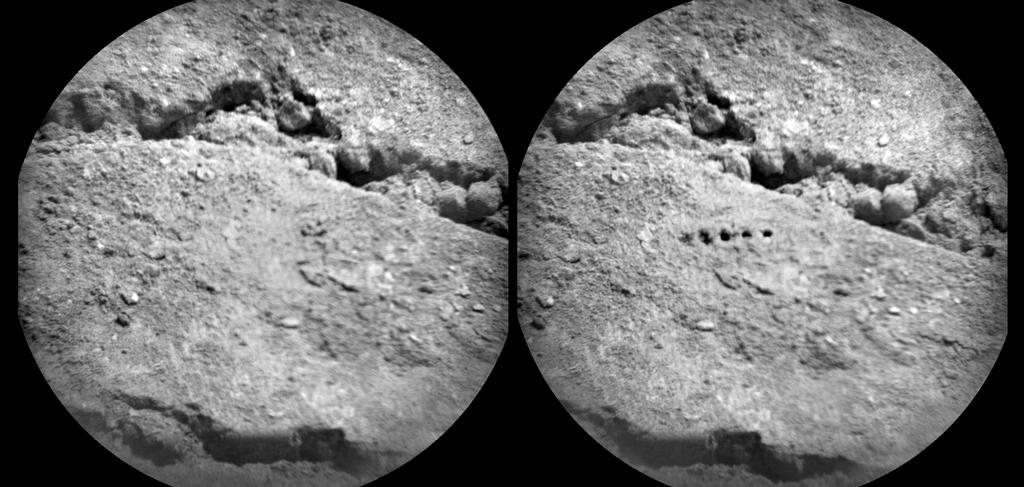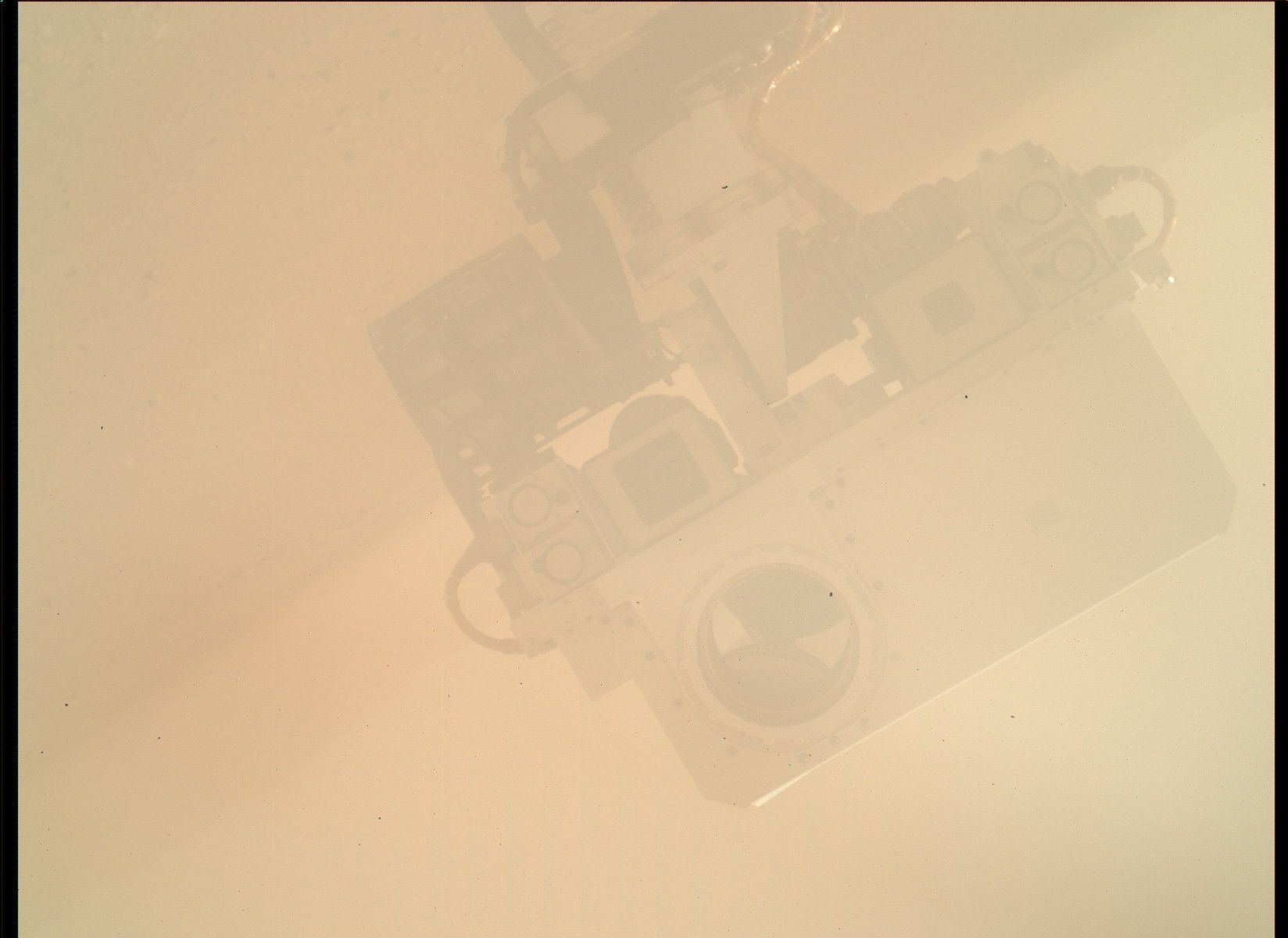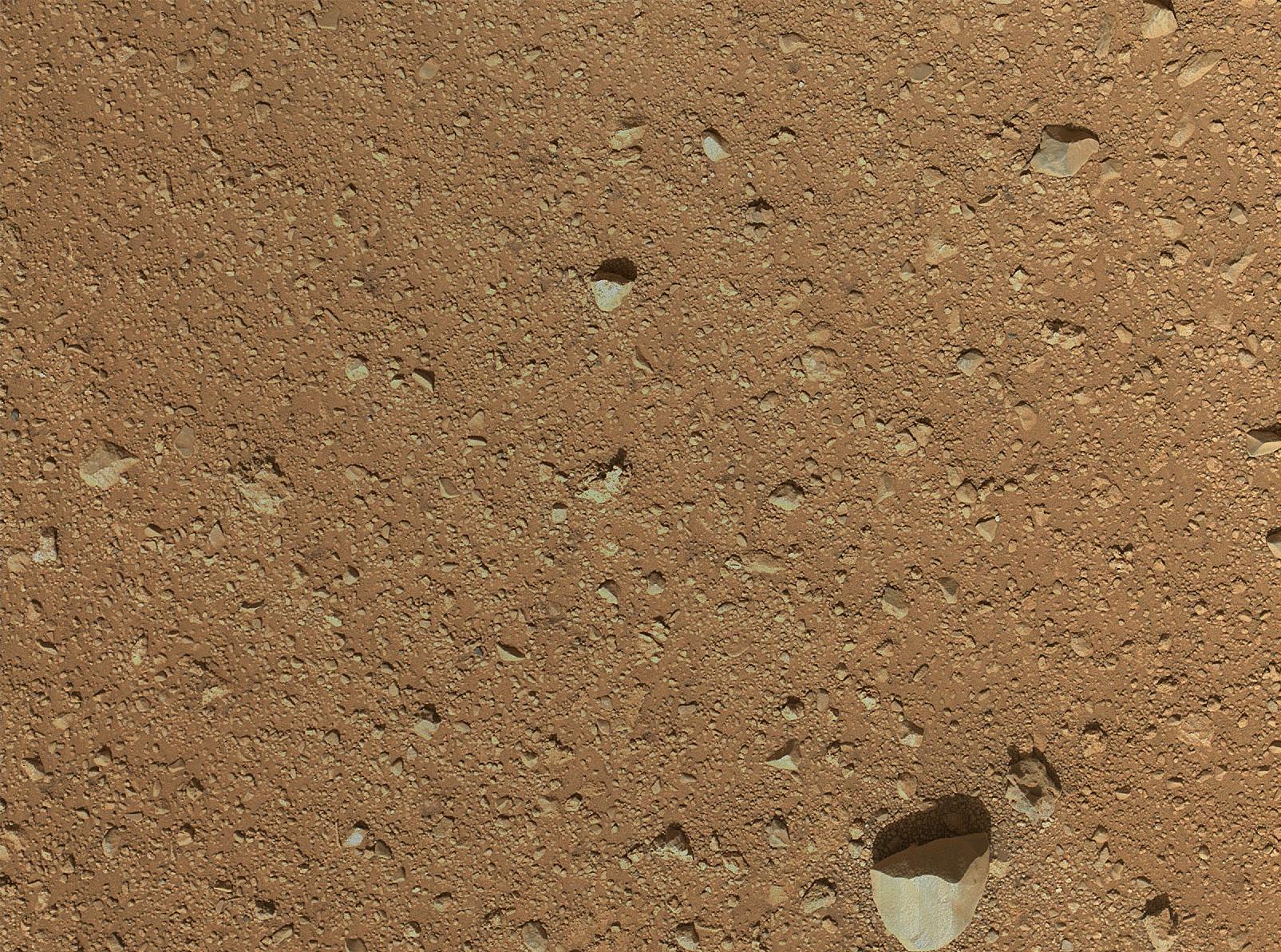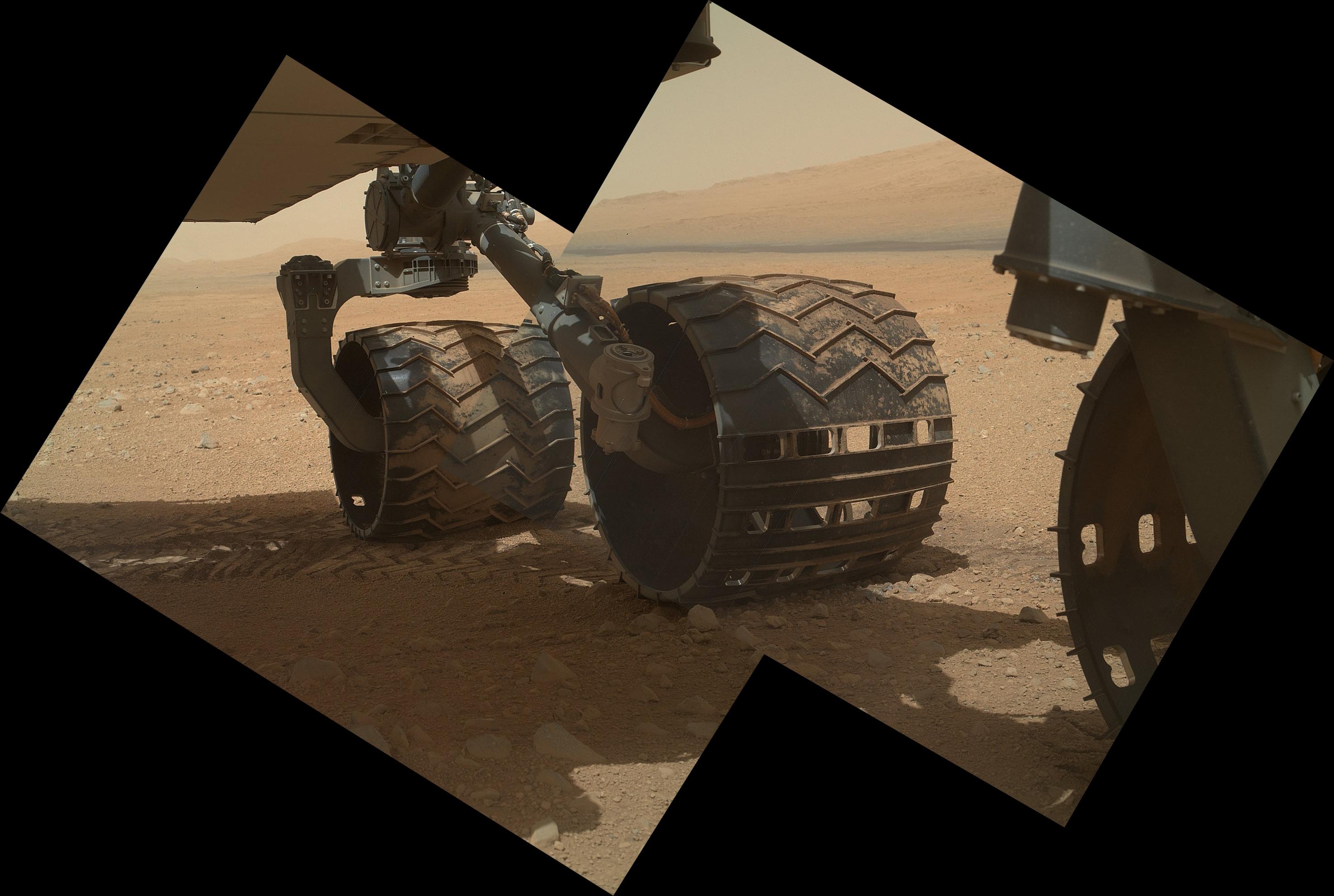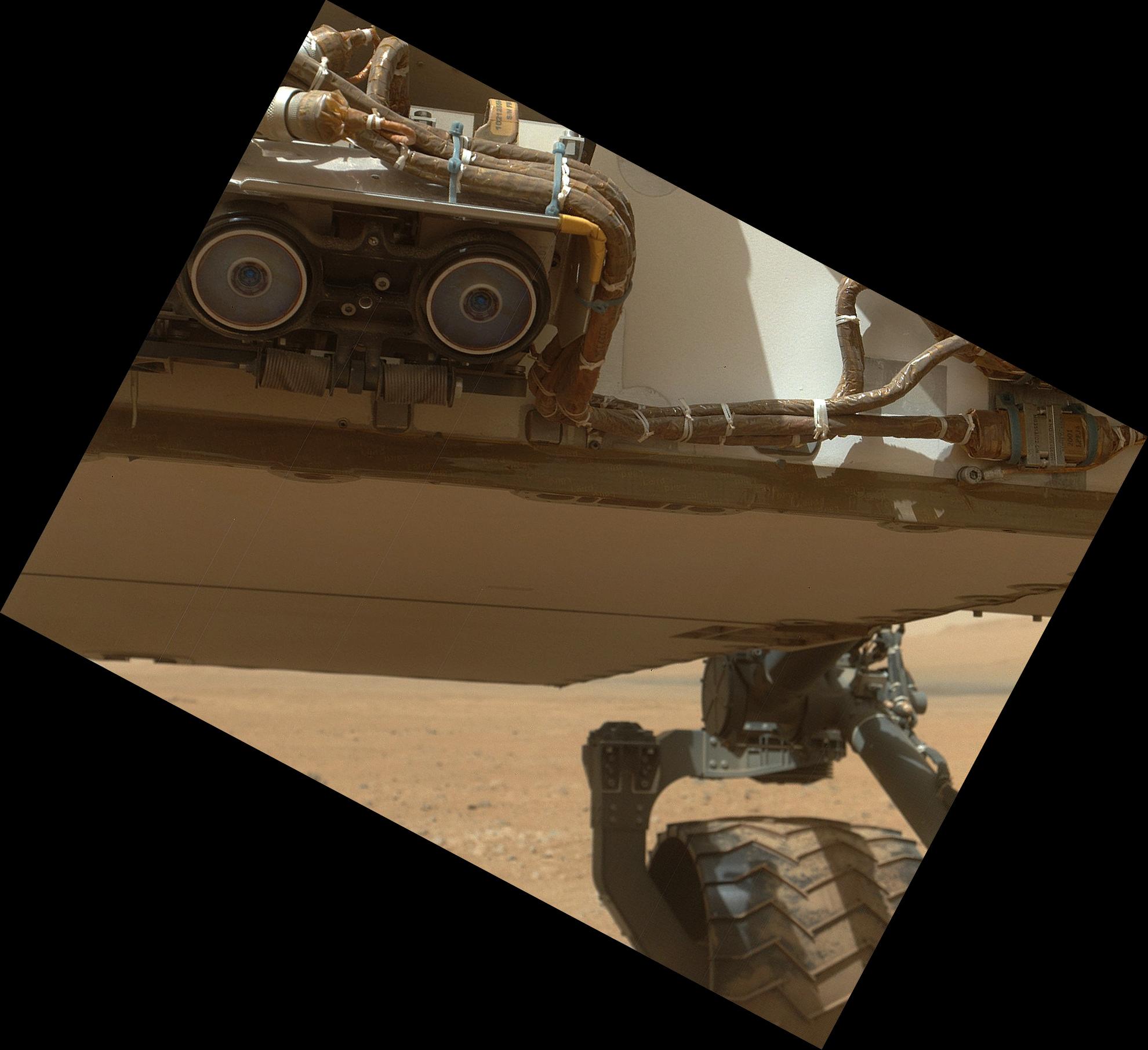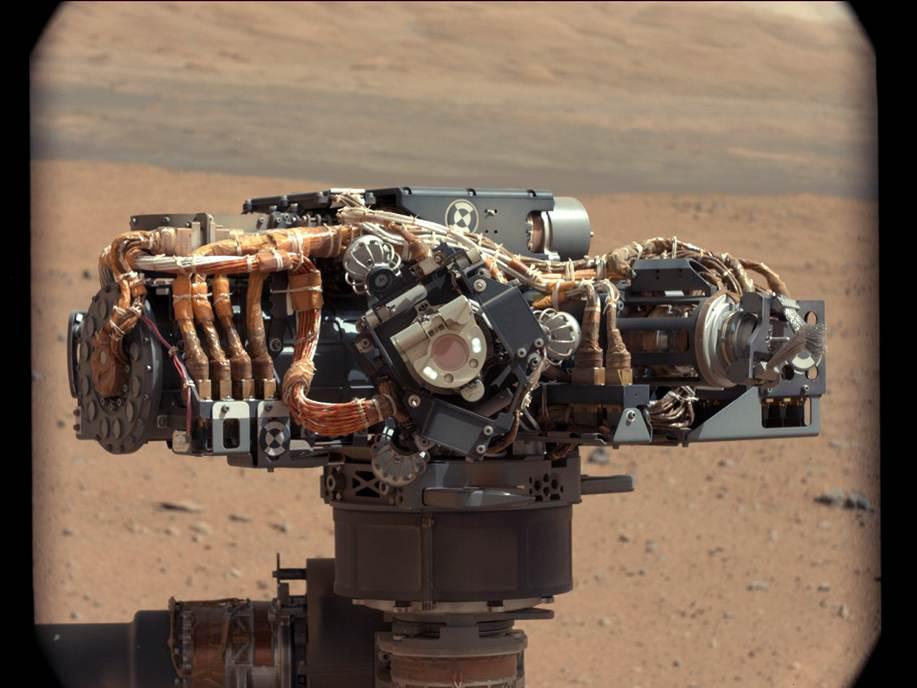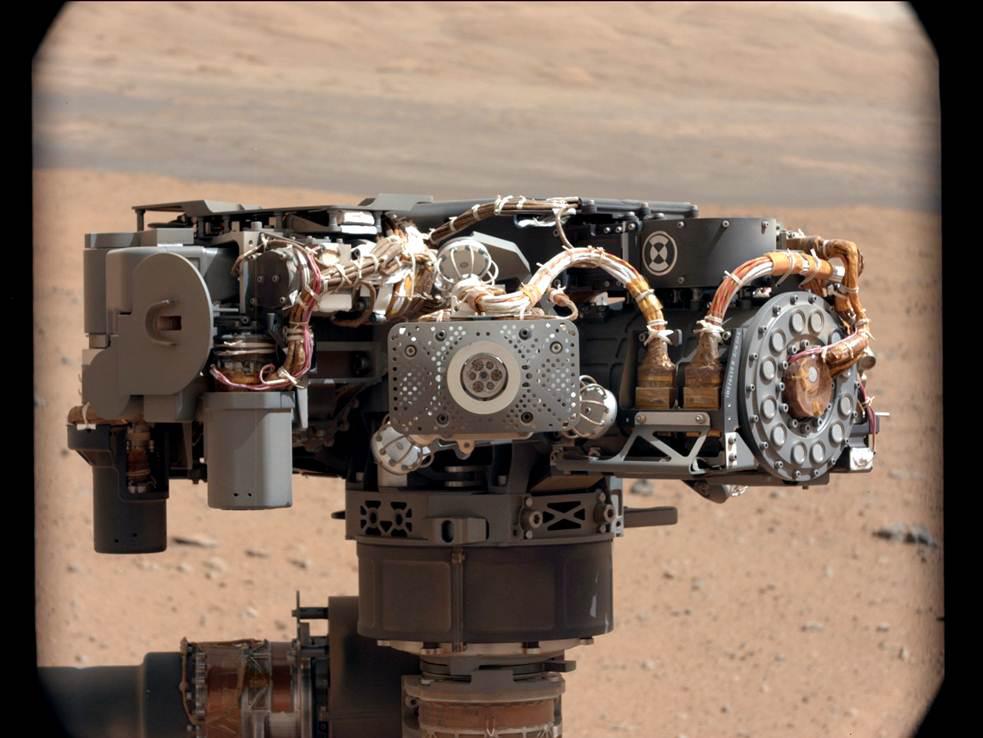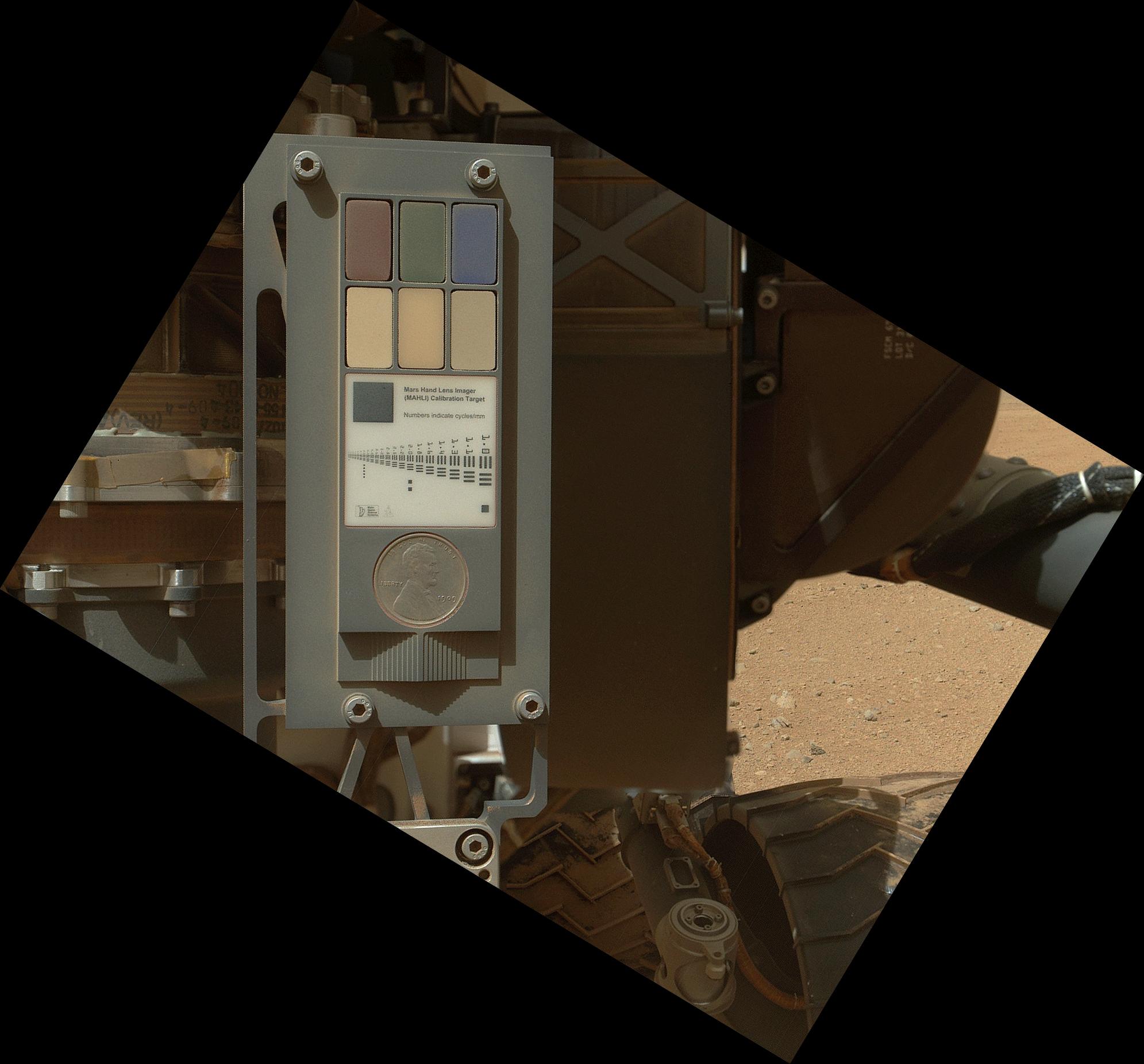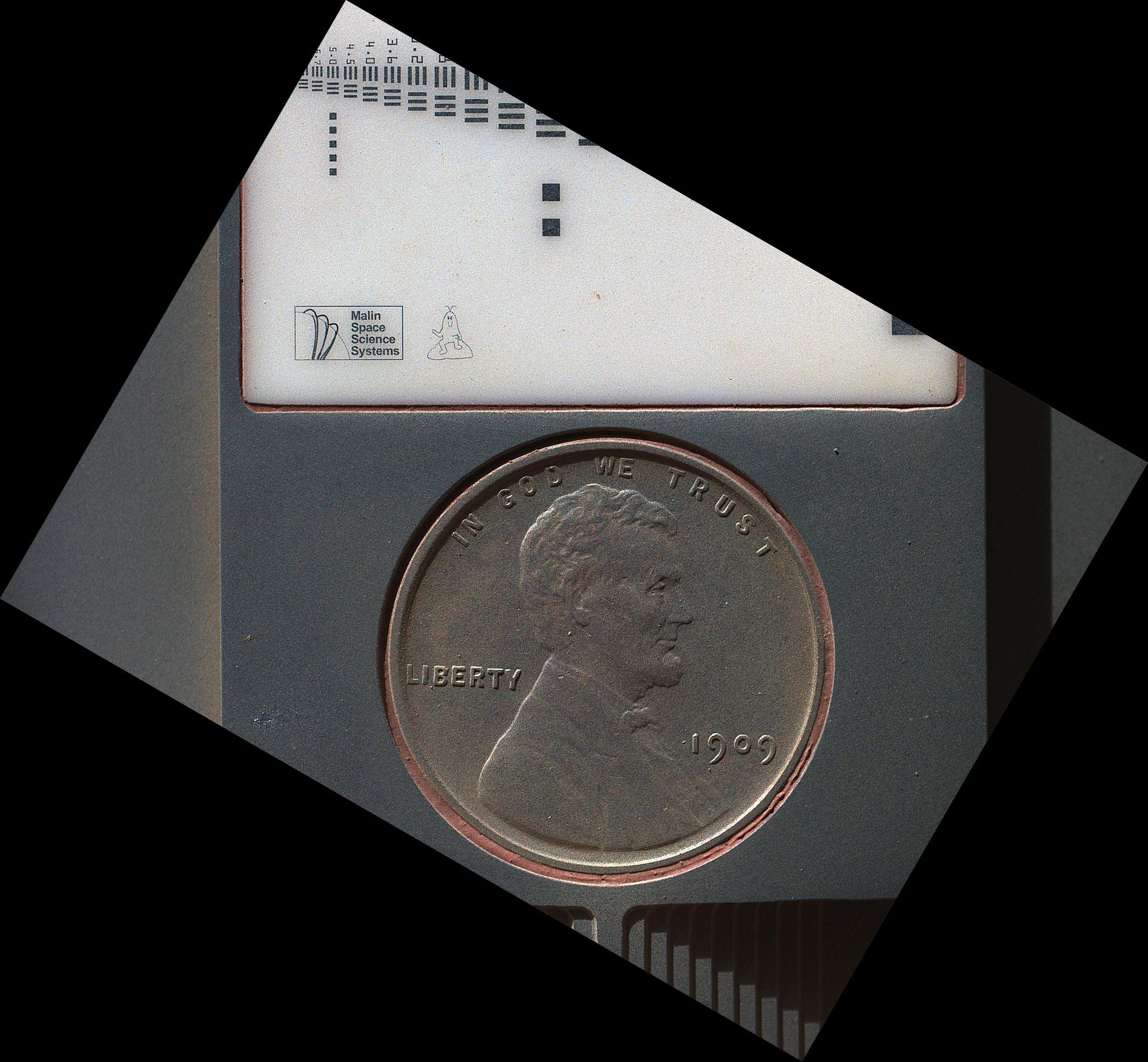W&T Wetenschap & Technologie
Een plek om te discussiëren over wetenschappelijke onderwerpen, wetenschappelijke problemen, technologische projecten en grootse uitvindingen.



Hoezo draadloos
<a href="http://www.vwkweb.nl/" rel="nofollow" target="_blank">[b]Vereniging voor weerkunde en klimatologie[/b]</a>
<a href="http://www.estofex.org/" rel="nofollow" target="_blank">[b]ESTOFEX[/b]</a>
<a href="http://www.estofex.org/" rel="nofollow" target="_blank">[b]ESTOFEX[/b]</a>


Nope....quote:Op maandag 27 augustus 2012 23:25 schreef xzaz het volgende:
Nou gelijk ook antwoord op wat dat object was.
Maar die video is fake
<a href="http://www.vwkweb.nl/" rel="nofollow" target="_blank">[b]Vereniging voor weerkunde en klimatologie[/b]</a>
<a href="http://www.estofex.org/" rel="nofollow" target="_blank">[b]ESTOFEX[/b]</a>
<a href="http://www.estofex.org/" rel="nofollow" target="_blank">[b]ESTOFEX[/b]</a>


Over a few days we drive away... 
<a href="http://www.vwkweb.nl/" rel="nofollow" target="_blank">[b]Vereniging voor weerkunde en klimatologie[/b]</a>
<a href="http://www.estofex.org/" rel="nofollow" target="_blank">[b]ESTOFEX[/b]</a>
<a href="http://www.estofex.org/" rel="nofollow" target="_blank">[b]ESTOFEX[/b]</a>


quote:Op maandag 27 augustus 2012 23:32 schreef -CRASH- het volgende:
Daar wil ik wel heen met een geologen hamertje...
[ link | afbeelding ]
The difference between the three Abrahamic religions:
- Christianity mumbling to the ceiling,
- Judaism mumbling to the wall,
- Islam mumbling to the floor.
- Christianity mumbling to the ceiling,
- Judaism mumbling to the wall,
- Islam mumbling to the floor.


Verbrandingsmotor, gaat niet werken omdat daar veel te weinig zuurstof is.quote:
❤ Rozen zijn rood ❤
❤ Viooltjes zijn blauw ❤
❤ Kristel, ik hou van jou! ❤
❤ Viooltjes zijn blauw ❤
❤ Kristel, ik hou van jou! ❤


Aangepaste versie, blok plutonium achterinquote:Op maandag 27 augustus 2012 23:39 schreef __Saviour__ het volgende:
[..]
Verbrandingsmotor, gaat niet werken omdat daar veel te weinig zuurstof is.
The difference between the three Abrahamic religions:
- Christianity mumbling to the ceiling,
- Judaism mumbling to the wall,
- Islam mumbling to the floor.
- Christianity mumbling to the ceiling,
- Judaism mumbling to the wall,
- Islam mumbling to the floor.


quote:Op maandag 27 augustus 2012 23:39 schreef __Saviour__ het volgende:
[..]
Verbrandingsmotor, gaat niet werken omdat daar veel te weinig zuurstof is.
Als je vast komt te zitten kun je nog altijd duwen
<a href="http://www.vwkweb.nl/" rel="nofollow" target="_blank">[b]Vereniging voor weerkunde en klimatologie[/b]</a>
<a href="http://www.estofex.org/" rel="nofollow" target="_blank">[b]ESTOFEX[/b]</a>
<a href="http://www.estofex.org/" rel="nofollow" target="_blank">[b]ESTOFEX[/b]</a>


Wow ze gaan 100 meter 
http://www.nasa.gov/image(...)a16100-full_full.jpg (pas op heel groot)
quote:Op maandag 27 augustus 2012 23:41 schreef -CRASH- het volgende:
[..]
[ afbeelding ]
Als je vast komt te zitten kun je nog altijd duwen
http://www.nasa.gov/image(...)a16100-full_full.jpg (pas op heel groot)


http://www.nasa.gov/mission_pages/msl/multimedia/pia16105.html
Prachtige foto. Daar zou ik idd ook wel even rond willen kijken.
Prachtige foto. Daar zou ik idd ook wel even rond willen kijken.


Waar komen die bergen op Mars eigenlijk vandaan zonder platentektoniek?
❤ Rozen zijn rood ❤
❤ Viooltjes zijn blauw ❤
❤ Kristel, ik hou van jou! ❤
❤ Viooltjes zijn blauw ❤
❤ Kristel, ik hou van jou! ❤


Vulkanisme... Asteroide inslagen....Erosiequote:Op maandag 27 augustus 2012 23:55 schreef __Saviour__ het volgende:
Waar komen die bergen op Mars eigenlijk vandaan zonder platentektoniek?
<a href="http://www.vwkweb.nl/" rel="nofollow" target="_blank">[b]Vereniging voor weerkunde en klimatologie[/b]</a>
<a href="http://www.estofex.org/" rel="nofollow" target="_blank">[b]ESTOFEX[/b]</a>
<a href="http://www.estofex.org/" rel="nofollow" target="_blank">[b]ESTOFEX[/b]</a>


27-08-2012
Will.i.am lanceert nieuwe single vanop Mars
Will.I.am. © reuters.
Hoewel single-releases vaak ongemerkt voorbijgaan, verwacht die van Will.i.am wel heel bijzonder te worden. Zo zal de Amerikaanse rapper zijn gloednieuwe song 'Reach for the Stars' morgen uitbrengen vanop Mars en dit dankzij de luidsprekers die bevestigd zijn op de marsjeep 'Curiosity'.
Via luidsprekers op de Curiosity genieten de marsmannetjes morgen als eerste van de nieuwe single van Will.i.am. © photo news.
Volgens het Britse magazine ContactMusic krijgen studenten in een laboratorium van Pasadena (Californië) de eer om het nieuwe nummer van Will.i.am als eerste te beluisteren. Het evenement, dat wordt georganiseerd door de NASA, wordt morgenavond (Britse tijd) bovendien via live streaming uitgezonden op verschillende websites.
De 'Black Eyed Peas'-zanger is duidelijk een grote fan van de Curiosity. Zo was hij er ook al als de kippen bij toen de Curiosity zijn eerste stapjes maakte op Mars. "We hebben het gehaald", tweette hij. "We zijn geland op Mars... Wij, mensen, hebben de Curiosity tot op Mars gebracht." Zoals we de immer goedlachse zanger kennen, kon er uiteraard nog een mopje vanaf: "Het eerste wat we zagen was een 'wiel'... wiel.I.am."
We zijn alvast benieuwd hoe de marsmannetjes morgen zullen reageren op hun eerste kennismaking met de rapper...
(HLN)
Will.i.am lanceert nieuwe single vanop Mars
Will.I.am. © reuters.
Hoewel single-releases vaak ongemerkt voorbijgaan, verwacht die van Will.i.am wel heel bijzonder te worden. Zo zal de Amerikaanse rapper zijn gloednieuwe song 'Reach for the Stars' morgen uitbrengen vanop Mars en dit dankzij de luidsprekers die bevestigd zijn op de marsjeep 'Curiosity'.
Via luidsprekers op de Curiosity genieten de marsmannetjes morgen als eerste van de nieuwe single van Will.i.am. © photo news.
Volgens het Britse magazine ContactMusic krijgen studenten in een laboratorium van Pasadena (Californië) de eer om het nieuwe nummer van Will.i.am als eerste te beluisteren. Het evenement, dat wordt georganiseerd door de NASA, wordt morgenavond (Britse tijd) bovendien via live streaming uitgezonden op verschillende websites.
De 'Black Eyed Peas'-zanger is duidelijk een grote fan van de Curiosity. Zo was hij er ook al als de kippen bij toen de Curiosity zijn eerste stapjes maakte op Mars. "We hebben het gehaald", tweette hij. "We zijn geland op Mars... Wij, mensen, hebben de Curiosity tot op Mars gebracht." Zoals we de immer goedlachse zanger kennen, kon er uiteraard nog een mopje vanaf: "Het eerste wat we zagen was een 'wiel'... wiel.I.am."
We zijn alvast benieuwd hoe de marsmannetjes morgen zullen reageren op hun eerste kennismaking met de rapper...
(HLN)
Death Makes Angels of us all
And gives us wings where we had shoulders
Smooth as raven' s claws...
And gives us wings where we had shoulders
Smooth as raven' s claws...


Hoe blijft men toch steeds met die onzin komen dat Curiosity luidsprekers zou hebben? 
Op dinsdag 23 augustus 2011 23:18 schreef problematiQue het volgende:
Mensen die zomaar claimen dat A beter is dan B moet je gewoon negeren. Internetruis.
Mensen die zomaar claimen dat A beter is dan B moet je gewoon negeren. Internetruis.


Geen ideequote:Op dinsdag 28 augustus 2012 09:01 schreef Gebraden_Wombat het volgende:
Hoe blijft men toch steeds met die onzin komen dat Curiosity luidsprekers zou hebben?
Waarschijnlijk niet goed genoeg geresearched
Death Makes Angels of us all
And gives us wings where we had shoulders
Smooth as raven' s claws...
And gives us wings where we had shoulders
Smooth as raven' s claws...


28-08-2012
Curiosity maakt prachtige foto en kaatst menselijke stem terug
Curiosity heeft een fantastische foto gemaakt van de gelaagde grondvesten waarop Mount Sharp – de uiteindelijke eindbestemming van de Marsrover – rust. Maar Curiosity kiekt niet alleen: de rover schrijft ook geschiedenis en wel door een gesproken boodschap op te vangen en terug naar aarde te kaatsen.
“Dit is het deel van Mount Sharp waar Curiosity naartoe zal gaan,” vertelt Michael Malin naar aanleiding van de foto die NASA heeft vrijgegeven. “Deze lagen zijn ons ultieme doel.” De handen van de onderzoekers jeuken bij het zien van deze foto. Ze kunnen niet wachten om hier monsters te gaan verzamelen.
Samenstelling
“Voor het donkere zand zie je roder zand, de andere kleur suggereert een andere samenstelling. De stenen op de voorgrond laten diversiteit zien: sommigen zijn rond, sommigen hoekig, ze hebben hun eigen verhalen.” En Curiosity gaat die verhalen hopelijk onthullen.
De basis van Mount Sharp. Foto: NASA / JPL-Caltech / MSSS.
Stem
Naast de prachtige foto heeft Curiosity nog iets bijzonders gedaan, zo meldt NASA. De rover heeft een menselijke stem op Mars opgevangen en weer terug naar de aarde gestuurd. NASA-baas Charles Bolden gaf Curiosity een boodschap door. De Marsrover kaatste deze via NASA’s Deep Space Network (DSN) weer terug. Het is voor het eerst dat een opname van een menselijke stem van de aarde naar een andere planeet en weer terug is gereisd. In de boodschap benadrukt Bolden hoe belangrijk de missie van Curiosity is. “De kennis die we middels onze observaties en analyse van de Gale-krater hopen te verkrijgen, zal ons veel meer vertellen over de mogelijkheid van leven op Mars en de mogelijkheden die onze eigen planeet in het verleden en de toekomst heeft. Curiosity zal de aarde goeddoen en een nieuwe generatie wetenschappers en verkenners inspireren, aangezien deze de weg vrijmaakt voor bemande missies (naar Mars, red.) in de nabij toekomst.”
Inmiddels bevindt Curiosity zich zo’n drie weken op Mars. En alles loopt op rolletjes. Curiosity heeft al een eerste ritje gemaakt, blijft mooie foto’s maken en heeft ook al stenen gelaserd en geanalyseerd. Al met al heeft de Marsrover al meer gegevens omtrent het oppervlak van Mars naar aarde gestuurd dan alle eerdere Marsrovers bij elkaar.
(scientias.nl)
Curiosity maakt prachtige foto en kaatst menselijke stem terug
Curiosity heeft een fantastische foto gemaakt van de gelaagde grondvesten waarop Mount Sharp – de uiteindelijke eindbestemming van de Marsrover – rust. Maar Curiosity kiekt niet alleen: de rover schrijft ook geschiedenis en wel door een gesproken boodschap op te vangen en terug naar aarde te kaatsen.
“Dit is het deel van Mount Sharp waar Curiosity naartoe zal gaan,” vertelt Michael Malin naar aanleiding van de foto die NASA heeft vrijgegeven. “Deze lagen zijn ons ultieme doel.” De handen van de onderzoekers jeuken bij het zien van deze foto. Ze kunnen niet wachten om hier monsters te gaan verzamelen.
Samenstelling
“Voor het donkere zand zie je roder zand, de andere kleur suggereert een andere samenstelling. De stenen op de voorgrond laten diversiteit zien: sommigen zijn rond, sommigen hoekig, ze hebben hun eigen verhalen.” En Curiosity gaat die verhalen hopelijk onthullen.
De basis van Mount Sharp. Foto: NASA / JPL-Caltech / MSSS.
Stem
Naast de prachtige foto heeft Curiosity nog iets bijzonders gedaan, zo meldt NASA. De rover heeft een menselijke stem op Mars opgevangen en weer terug naar de aarde gestuurd. NASA-baas Charles Bolden gaf Curiosity een boodschap door. De Marsrover kaatste deze via NASA’s Deep Space Network (DSN) weer terug. Het is voor het eerst dat een opname van een menselijke stem van de aarde naar een andere planeet en weer terug is gereisd. In de boodschap benadrukt Bolden hoe belangrijk de missie van Curiosity is. “De kennis die we middels onze observaties en analyse van de Gale-krater hopen te verkrijgen, zal ons veel meer vertellen over de mogelijkheid van leven op Mars en de mogelijkheden die onze eigen planeet in het verleden en de toekomst heeft. Curiosity zal de aarde goeddoen en een nieuwe generatie wetenschappers en verkenners inspireren, aangezien deze de weg vrijmaakt voor bemande missies (naar Mars, red.) in de nabij toekomst.”
Inmiddels bevindt Curiosity zich zo’n drie weken op Mars. En alles loopt op rolletjes. Curiosity heeft al een eerste ritje gemaakt, blijft mooie foto’s maken en heeft ook al stenen gelaserd en geanalyseerd. Al met al heeft de Marsrover al meer gegevens omtrent het oppervlak van Mars naar aarde gestuurd dan alle eerdere Marsrovers bij elkaar.
(scientias.nl)
Death Makes Angels of us all
And gives us wings where we had shoulders
Smooth as raven' s claws...
And gives us wings where we had shoulders
Smooth as raven' s claws...


Of dat men de kostbare en beperkte dataoverdracht zou gebruiken om compleet nutteloos mp3's naar Curiosity te sturen. Of Curiosity's beperkte opslag voor zulke crap te gebruiken enz.quote:Op dinsdag 28 augustus 2012 09:01 schreef Gebraden_Wombat het volgende:
Hoe blijft men toch steeds met die onzin komen dat Curiosity luidsprekers zou hebben?
O well, gewoon lekker laten gaan. "Britney Spears op Mars"


NASA Science Curiosity Mission News Conference (28 aug, door NASAtelevision)
Death Makes Angels of us all
And gives us wings where we had shoulders
Smooth as raven' s claws...
And gives us wings where we had shoulders
Smooth as raven' s claws...


Wat was dan het doel van die stemopname van de NASA topman die is terug gestuurd door Curiousity ?quote:Op dinsdag 28 augustus 2012 15:30 schreef NorthernStar het volgende:
[..]
Of dat men de kostbare en beperkte dataoverdracht zou gebruiken om compleet nutteloos mp3's naar Curiosity te sturen. Of Curiosity's beperkte opslag voor zulke crap te gebruiken enz.


Damn, dat is echt een behoorlijke zoom!quote:
Opgeblazen gevoel of winderigheid? Zo opgelost met Rennie!


Het heeft geen doel maar geeft weer hoever we zijn gevorderd. Volgens mij was het een livestream vanaf Curiosity.quote:Op woensdag 29 augustus 2012 09:00 schreef KroodjeBip het volgende:
[..]
Wat was dan het doel van die stemopname van de NASA topman die is terug gestuurd door Curiousity ?


quote:Waarom de Marsrover Curiosity maar lullige 2mp camera’s heeft
De 2 megapixelsensoren van de camera's van Marsrover Curiosity kunnen niet tippen aan die van onze smartphones. Waarom is dat eigenlijk?
Maandagochtend landde Marsrover Curiosity op Mars. De eerste beelden van de Marsover bereikten ons al snel. Maar het zijn slechts 2 megapixelbeelden, dat verwacht je niet van een state-of-the-art ruimtevoertuig dat maar liefst 2,5 miljard dollar heeft gekost. Een beetje smartphone heeft immers al minimaal een 5 megapixelcamera.
Daar is echter een goede reden voor. Fotografie site DP Review sprak met Mike Ravine, de projectmanager verantwoordelijk voor de ontwikkeling van de camerasystemen van de Marsrover. Een uiterst complex systeem als een Marsrover ontwikkel je volgens Ravine niet in een paar jaar. De voorstellen voor het camera-ontwerp stammen uit 2004. Eenmaal voorgesteld mag je je ontwerpen niet zomaar aanpassen.
In 2004 was een 2 megapixelsensor met 8 gb aan flashgeheugen een realistische keuze voor de NASA, hoewel de 4 megapixelconsumentencamera in die tijd al zijn intrede deed. De voornaamste reden om voor een kleinere sensor te kiezen, was de hoeveelheid data die Curiosity per dag kan versturen. Voor het versturen van data maakt de Curiosity gebruik van een UHF zender die per dag maximaal 250 mb aan data kan versturen naar de aarde. Meer kan niet omdat er zeer veel energie benodigd is om zulke gegevens naar een gespecificeerde locatie op de aarde te sturen wanneer de planeten goed gepositioneerd waren. De camera’s moeten de datastroom delen met een hele riedel instrumenten.
Volgens Ravine speelde ook mee dat de gekozen sensor geschikt moest zijn voor alle vier de camera’s aan boord van de Curiosity, die ieder een eigen doel hebben. Hoewel deze vier camera’s optisch verschillen, was het voor de NASA aanzienlijk goedkoper om ze op één camerasensorplatform te baseren. Ze hoefden dan slechts een tests voor dat ene platform uit te voeren in plaats van vier verschillende testen. Dat scheelt aanzienlijk in de kosten. MARDI, de camera die de twee minuten durende landing moest filmen, vereiste een hoge framerate. De Kodak KAI-2020 chip was destijds de kleinste Kodak-chip die voldeed aan de eisen. De 4 megapixelchips waren half zo snel.
Volgens Ravine is het lage aantal pixels geen probleem omdat de mastcamera’s meerdere opnames aan elkaar zullen stitchen. Het verschil met een foto van een enkele hogere megapixelsensor zou niet veel voordelen opleveren.
Ravine had wel gehoopt dat de Curiosity uitgerust zou worden met zoomlenzen die de NASA had ontwikkeld. Twee van die lenzen tezamen hadden 3d-beelden kunnen opleveren. Maar omdat de mechanieken van de zoomlenzen ‘natte’ smering nodig hadden in vorm van olie of vet zouden de lenzen verwarmd moeten worden in de extreem koude temperaturen die op Mars heersen. Daarvoor werd er een gesloten systeem van verwarming getest. Dit bleek echter teveel energie vergen van de Curiosity en het zoomlens project werd geschrapt.


Publiciteitsstunt imo. Misschien zijn ze wel op het idee gebracht door die berichten over muzieknummers telkens. Als je nu op "first human voice" googled... tadaa!quote:Op woensdag 29 augustus 2012 09:00 schreef KroodjeBip het volgende:
[..]
Wat was dan het doel van die stemopname van de NASA topman die is terug gestuurd door Curiousity ?


http://www.astroblogs.nl/(...)-allemaal-aan-boord/quote:Op woensdag 29 augustus 2012 20:40 schreef TheDutchguy het volgende:
[..]
Paar posts boven me staat dat er een 4 megapixel camera opzit. Is deze foto daarmee gemaakt ?


Ask Curiosity
Relationship advice from a doomed machine on a one-way trip to a (probably) lifeless planet.
"Spirit froze to death in a sand pit, did you know that? It took months."
Relationship advice from a doomed machine on a one-way trip to a (probably) lifeless planet.
"Spirit froze to death in a sand pit, did you know that? It took months."


2MP.quote:Op woensdag 29 augustus 2012 20:40 schreef TheDutchguy het volgende:
[..]
Paar posts boven me staat dat er een 4 megapixel camera opzit. Is deze foto daarmee gemaakt ?


Yep.
quote:Marks of Laser Exam on Martian Soil
The Chemistry and Camera (ChemCam) instrument on NASA's Mars rover Curiosity used its laser to examine side-by-side points in a target patch of soil, leaving the marks apparent in this before-and-after comparison.
The two images were taken by ChemCam's Remote Micro-Imager from a distance of about 11.5 feet (3.5 meters). The diameter of the circular field of view is about 3.1 inches (7.9 centimeters).
Researchers used ChemCam to study this soil target, named "Beechey," during the 19th Martian day, or sol, of Curiosity's mission (Aug. 25, 2012). The observation mode, called a five-by-one raster, is a way to investigate chemical variability at short scale on rock or soil targets. For the Beechey study, each point received 50 shots of the instrument's laser. The points on the target were studied in sequence left to right. Each shot delivers more than a million watts of power for about five one-billionths of a second. The energy from the laser excites atoms in the target into a glowing state, and the instrument records the spectra of the resulting glow to identify what chemical elements are present in the target.
The holes seen here have widths of about 0.08 inch to 0.16 inch (2 to 4 millimeters), much larger than the size of the laser spot (0.017 inch or 0.43 millimeter at this distance). This demonstrates the power of the laser to evacuate dust and small unconsolidated grains. A preliminary analysis of the spectra recorded during this raster study show that the first laser shots look alike for each of the five points, but then variability is seen from shot to shot in a given point and from point to point.
ChemCam was developed, built and tested by the U.S. Department of Energy's Los Alamos National Laboratory in partnership with scientists and engineers funded by France's national space agency, Centre National d'Etudes Spatiales (CNES) and research agency, Centre National de la Recherche Scientifique (CNRS).
NASA's Jet Propulsion Laboratory, a division of the California Institute of Technology, Pasadena, manages the Mars Science Laboratory Project, including Curiosity, for NASA's Science Mission Directorate, Washington. JPL designed and built the rover.
Image Credit: NASA/JPL-Caltech/LANL/ CNES/IRAP/LPGN/CNRS


Die Nasa mensen zijn wel flink veranderd... Vroeger superserieuze mannen in pak waar geen glimlach te bespeuren viel; en nu zit de flight director daar in een hawaii t-shirt, en een zeer modern kapsel....quote:
How can I make this topic about me?


Ik denk dat het ook deels image is  Mensen in witte labjassen spreken het grote publiek niet zo aan
Mensen in witte labjassen spreken het grote publiek niet zo aan 
Opgeblazen gevoel of winderigheid? Zo opgelost met Rennie!


Bobak 
Hij's wel heel erg gay trouwens, zo ruig als een kokosmat

Hij's wel heel erg gay trouwens, zo ruig als een kokosmat
The difference between the three Abrahamic religions:
- Christianity mumbling to the ceiling,
- Judaism mumbling to the wall,
- Islam mumbling to the floor.
- Christianity mumbling to the ceiling,
- Judaism mumbling to the wall,
- Islam mumbling to the floor.


He's NASA and he knows it 
The difference between the three Abrahamic religions:
- Christianity mumbling to the ceiling,
- Judaism mumbling to the wall,
- Islam mumbling to the floor.
- Christianity mumbling to the ceiling,
- Judaism mumbling to the wall,
- Islam mumbling to the floor.


Bekijk de video eens,.quote:Op zaterdag 1 september 2012 01:45 schreef Robus het volgende:
Staat daar JPL in morsecode op z'n hoofd?


Zal dat signaal afkomstig van die rover en mars orbiters encrypted zijn? Natuurlijk red je het niet om het signaal af te luisteren met je astra schotel aan je balkon natuurlijk, maar 't zal niet voor het eerst zijn dat de NASA daar iets in is vergeten.
How can I make this topic about me?


Wil je Curi gaan hacken......
How to Hack NASA's Curiosity Mars Rover
How to Hack NASA's Curiosity Mars Rover
quote:The two biggest tech and science stories of the past week were the brutal hacking of Wired reporter Mat Honan's digital life and the exhilarating arrival of NASA's Curiosity rover on the surface of Mars. So here at PCMag, we decided to combine those two stories into one Google-friendly gob of geeky goodness.
That's right, folks, we're going to tell you how to hack the Mars rover.
First, a disclaimer: We don't recommend anybody actually try this. Let science do its thing, people! Nor do we believe we're giving anybody a bright idea just by performing this technical exercise. As we found out after talking to several hackers, crackers, and security pros, the resources required to pull this off are prohibitive—the folks with the actual resources required to compromise Curiosity (*cough* China *cough*) don't need our cobbled-together advice on how to do it.
In other words, a state-backed actor could maybe take over NASA's planetary crawler, but the script kiddies are pretty much SOL here. We are exceedingly unlikely to see "We Are Legion" transmitted by Curiosity as its last act before driving off a cliff while IRC explodes with lulz.
With that said, let's hack the rover!
The Hard Way
The first thing we learned is that hacking Curiosity itself across 352 million miles of interplanetary vacuum is almost certainly the wrong approach to this task. Much better to try to sneak into NASA's own control systems here on Earth, which AlienVault research team engineer Conrad Constantine described as "the weakest, most inexpensive link in all of this."
More on that later. For funsies, here's what Constantine had to say about the hurdles you'd have to overcome to start pinging Curiosity with diabolical contra-NASA instructions:
You would have to be able to transmit an X-Band radio signal at peak 400 kilowatts to reach the Mars rover. Considering you need something that can do 400,000 watts to even have a fighting chance of overriding NASA's own control signal and you can begin to see that it's a pretty serious cost-of-entry to play in this game."
It is probably N-WAY QPSK encoding and you'd have to match that (this is similar to the encoding they use for satellite TV). Difficult, but not impossible. All this stuff would take a good amount of time and observation. Plus you'd want to capture NASA's own transmissions to the rover. That could be tough—they're pretty damn directional."
There's a massive amount of forward-error correction going on as well—remember that Curiosity is receiving queued-up commands from NASA's orbital transponders over low-bandwidth X-BAND uhf (8ghz). This gets into similar territory as TCP/IP spoofing, where you have to predict what the rover is expecting next. Unless you could intercept the directional transmission from the orbital transponders, you're just guessing what state the communications are in.
One hint at just how tough it might be to penetrate the rover's security barriers came by way of a brief story on Space.com earlier this year detailing how the Curiosity team remotely fixed a register glitch in the rover's memory cache, noted Dmitri Alperovitch, co-founder and CTO of CrowdStrike.
"They are updating the software on the rover all the time," said Alperovitch. What's more, these aren't just automated updates like the kind your PC gets on Patch Tuesdays. You have to believe the Curiosity team at NASA's Jet Propulsion Lab (JPL) has a pretty intimate relationship with the rover's systems, making it very tough to sneak a malicious payload by the many engineers who are currently checking up on their baby more obsessively than a D-list celebrity refreshes his Twitter feed.
Sorry, Anons, but the JPL gang probably eats clumsy SQL injections for breakfast.
The Slightly Less Hard Way
So if not a direct assault on NASA's core software, what next? F-Secure security advisor Sean Sullivan suggested an alternative.
"I'm afraid that I don't know enough about the actual code and systems used to come up with much, but for a 'far out' scenario in which money is not an object, I'd backdoor some of the [third-party] technology on board," he said.
Sullivan pointed to pressure and humidity sensors on Curiosity supplied by the Finnish Meteorological Institute. "Perhaps not all is as it seems" with those possible poison pills, he noted archly, shocking us for a moment before we recalled that F-Secure is headquartered in Helsinki and laughed at the inside joke.
In fact, it seems unlikely that NASA's vetting of tech supplied by mission partners like the Finns would have allowed a backdoor access point onto the rover. What's a lot more troubling, to paraphrase Donald Rumsfeld, are the unknown knowns about what makes Curiosity tick that may be out there.
Earlier this year, NASA Inspector General Paul Martin briefed Congress on the "the loss or theft of 48 Agency mobile computing devices" between April 2009 and April 2011 and "5,408 computer security incidents [in 2010 and 2011] that resulted in the installation of malicious software on or unauthorized access to [NASA] systems."
Yikes? The loss of sensitive data on Curiosity wasn't specifically mentioned in Martin's report, which identified "ISS command algorithms" and data related to NASA's Orion deep space capsule as among the losses to unknown actors in recent years, but still—yikes.
The Scarily Possible Way
As mentioned, a brute force takeover of Curiosity isn't as attractive a prospect as trying to infiltrate the Earthside signaling operation.
"Really though, the only viable way to do this on a budget would be to take control of NASA's own control systems. That's the weakest, most inexpensive link in all of this and NASA has the only existing, viable communications setup to the Rover. You'd have to get control of that, without them noticing," said AlienVault's Constantine.
"What you have here is a very moist attack surface, it's saturated with existing comms that you would have to intercept, predict and hijack. Going after the existing control system is likely the most porous point of attack."
CrowdStrike's Alperovitch concurred, but wondered if "the most sophisticated actors capable of this would have the motive" to try to hijack a scientific mission that basically stands to benefit all humankind. That didn't stop him from playing the guessing game, of course.
"Imagine if hackers were able to get access to the systems operating NASA's Deep Space Network—the one that is responsible for radio communications with the rover and other interplanetary objects. Then you would be able to send instructions to the rover and even destroy it by driving it into a rock, for example. Theoretically, you could also upgrade its firmware to no longer accept instructions from NASA so that you would be the sole operator," he mused.
Farfetched? Not as much as you might think.
Several sources pointed to reports that U.S. government satellites were compromised at least four times in 2007 and 2008, possibly at the hands of Chinese computer hackers with ties to the country's military, as well as allegations by Russian space agency officials that cyber-skullduggery was responsible for the failure of the Phobos-Grunt probe last year, as evidence that this sort of thing is well within the realm of possibility.
All that said, maybe the bluntest way to compromise Curiosity would be to plant a mole in JPL itself. And all we can say to that scenario is, stay vigilant, Mohawk Guy!
PCMag's Meredith Popolo was at the Jet Propulsion Lab in California last week covering the Curiosity rover's arrival on Mars. For more, see the slideshow below, which details her tour of JPL. Also check out 7 Minutes of Terror: Landing the Mars Curiosity Rover and What Powers the Mars Curiosity Rover?
For more from Damon, follow him on Twitter @dpoeter.
<a href="http://www.vwkweb.nl/" rel="nofollow" target="_blank">[b]Vereniging voor weerkunde en klimatologie[/b]</a>
<a href="http://www.estofex.org/" rel="nofollow" target="_blank">[b]ESTOFEX[/b]</a>
<a href="http://www.estofex.org/" rel="nofollow" target="_blank">[b]ESTOFEX[/b]</a>


Beetje onverantwoord om zo'n artikel te schrijven. Natuurlijk dat niet iemand dit zo gauw doet, maar soms heb je van die vervelende gekken tussen zitten, die hier voldoende aanknopingspunten in vinden om uit te werken.
Stel je voor dat het ze ook nog eens lukt om de BIOS/POST Mac-hardware op Curiosity lam te leggen. Zeg dan maar dag tegen je 2,5 miljard kostende autootje op Mars.
Stel je voor dat het ze ook nog eens lukt om de BIOS/POST Mac-hardware op Curiosity lam te leggen. Zeg dan maar dag tegen je 2,5 miljard kostende autootje op Mars.


mowah, de gekken die daadwerkelijk de intentie, kennis, financien en apparatuur hebben om dit te doen, hebben een artikel zoals deze niet nodigquote:Op zondag 2 september 2012 03:40 schreef KeimpeHart het volgende:
Beetje onverantwoord om zo'n artikel te schrijven. Natuurlijk dat niet iemand dit zo gauw doet, maar soms heb je van die vervelende gekken tussen zitten, die hier voldoende aanknopingspunten in vinden om uit te werken.
Stel je voor dat het ze ook nog eens lukt om de BIOS/POST Mac-hardware op Curiosity lam te leggen. Zeg dan maar dag tegen je 2,5 miljard kostende autootje op Mars.
Totaal Travel 04-24: 87 reizen, 151 vliegtickets, 58 landen, 6 continenten, 949 reisdagen, 163.804 foto's
Mijn reisfotos!
Mijn reisfotos!


Ik dacht dat dat ding de Explorer heette.. zo noem ik hem tenminste de hele tijd als ik over de ruimte praat met mensen


laten we dat maar niet doenquote:Op zondag 2 september 2012 10:17 schreef Acit het volgende:
Ik dacht dat dat ding de Explorer heette.. zo noem ik hem tenminste de hele tijd als ik over de ruimte praat met mensen
niet raar opkijken als iets explorer noemt en dan vervolgens crasht. Naam van dit schip was MS Explorer...
Totaal Travel 04-24: 87 reizen, 151 vliegtickets, 58 landen, 6 continenten, 949 reisdagen, 163.804 foto's
Mijn reisfotos!
Mijn reisfotos!


Ik moest lachenquote:Op zondag 2 september 2012 10:42 schreef ETA het volgende:
[..]
laten we dat maar niet doen
[ afbeelding ]
niet raar opkijken als iets explorer noemt en dan vervolgens crasht. Naam van dit schip was MS Explorer...
[i] When you try your best but you don't succeed. When you get what you want but not what you need. [/i]


Mooierdquote:Op zaterdag 8 september 2012 16:59 schreef Tauchmeister het volgende:
[ afbeelding ]
Foto van zichzelf
[i] When you try your best but you don't succeed. When you get what you want but not what you need. [/i]


SMILE...... Youre on candid cameraquote:Op zaterdag 8 september 2012 16:59 schreef Tauchmeister het volgende:
[ afbeelding ]
Foto van zichzelf
<a href="http://www.vwkweb.nl/" rel="nofollow" target="_blank">[b]Vereniging voor weerkunde en klimatologie[/b]</a>
<a href="http://www.estofex.org/" rel="nofollow" target="_blank">[b]ESTOFEX[/b]</a>
<a href="http://www.estofex.org/" rel="nofollow" target="_blank">[b]ESTOFEX[/b]</a>


Jup, duidelijk familie van Wall-e.quote:Op zaterdag 8 september 2012 16:59 schreef Tauchmeister het volgende:
[ afbeelding ]
Foto van zichzelf
Opgeblazen gevoel of winderigheid? Zo opgelost met Rennie!


Eerder Jonnhy 5quote:Op zondag 9 september 2012 00:37 schreef Eyjafjallajoekull het volgende:
[..]
Jup, duidelijk familie van Wall-e.
<a href="http://www.vwkweb.nl/" rel="nofollow" target="_blank">[b]Vereniging voor weerkunde en klimatologie[/b]</a>
<a href="http://www.estofex.org/" rel="nofollow" target="_blank">[b]ESTOFEX[/b]</a>
<a href="http://www.estofex.org/" rel="nofollow" target="_blank">[b]ESTOFEX[/b]</a>


Nee, het is de achterneef van Wall-e. Niet tegen um zeggen, maar hij is een beetje 'speciaal'. Ongelukje na een overdosis elektromagnetische straling.quote:Op zondag 9 september 2012 01:17 schreef -CRASH- het volgende:
[..]
Eerder Jonnhy 5
[ afbeelding ]
[ afbeelding ]
Opgeblazen gevoel of winderigheid? Zo opgelost met Rennie!


Beetje creepy foto dit
The difference between the three Abrahamic religions:
- Christianity mumbling to the ceiling,
- Judaism mumbling to the wall,
- Islam mumbling to the floor.
- Christianity mumbling to the ceiling,
- Judaism mumbling to the wall,
- Islam mumbling to the floor.


Eerste foto met open stofkap.
De steen onderaan is zo'n 8 cm.
[ Bericht 7% gewijzigd door Robus op 09-09-2012 18:57:17 ]
De steen onderaan is zo'n 8 cm.
[ Bericht 7% gewijzigd door Robus op 09-09-2012 18:57:17 ]


Lekker scherp beeld!  Het gaat om die camera op de arm, neem ik aan?
Het gaat om die camera op de arm, neem ik aan?
The difference between the three Abrahamic religions:
- Christianity mumbling to the ceiling,
- Judaism mumbling to the wall,
- Islam mumbling to the floor.
- Christianity mumbling to the ceiling,
- Judaism mumbling to the wall,
- Islam mumbling to the floor.


Scherp genoeg om ergens een jezus in te kunnen zien 
Exponentiële deflatie van Bitcoin maakt arme mensen nog veel sneller armer dan het grote probleem van inflatie. Gematigde burning van Ethereum is de gulden middenweg.


Een wat? 
The difference between the three Abrahamic religions:
- Christianity mumbling to the ceiling,
- Judaism mumbling to the wall,
- Islam mumbling to the floor.
- Christianity mumbling to the ceiling,
- Judaism mumbling to the wall,
- Islam mumbling to the floor.


Ik had een kleinere foto geplaatst zag ik. Heb nu de full-size erin gezet en is inderdaad gemaakt met de camera op de arm 


OH HAI
Op dinsdag 23 augustus 2011 23:18 schreef problematiQue het volgende:
Mensen die zomaar claimen dat A beter is dan B moet je gewoon negeren. Internetruis.
Mensen die zomaar claimen dat A beter is dan B moet je gewoon negeren. Internetruis.


Druk..... Curi is heavy metal (899KG)quote:Op maandag 10 september 2012 15:23 schreef xzaz het volgende:
Iemand een verklaring voor het stof dat aan de wielen blijft hangen? Is dat statisch oid?
<a href="http://www.vwkweb.nl/" rel="nofollow" target="_blank">[b]Vereniging voor weerkunde en klimatologie[/b]</a>
<a href="http://www.estofex.org/" rel="nofollow" target="_blank">[b]ESTOFEX[/b]</a>
<a href="http://www.estofex.org/" rel="nofollow" target="_blank">[b]ESTOFEX[/b]</a>


Dat is meer dan mijn auto.quote:Op maandag 10 september 2012 17:22 schreef -CRASH- het volgende:
[..]
Druk..... Curi is heavy metal (899KG)
Egregious professor of Cruel and Unusual Geography
Onikaan ni ov dovah
Onikaan ni ov dovah


Grappig als je dit vergelijkt met de fotos van de Viking
37 jaar geleden...
37 jaar geleden...
In Baden-Badener Badeseen kann man Baden-Badener baden sehen.


Oh dearquote:Mars: Fears Curiosity Will Contaminate Planet
Mars may be contaminated by microbes from Earth after strict procedures were breached before the Curiosity probe launched, a key Nasa official has revealed.
A sterilised drill bit was reportedly loaded into a drill on the rover by engineers before take-off, when it should have been automatically fitted once Curiosity landed.
The technical staff are said to have decided to open the microbe-free box containing the bit themselves because they feared a rough landing would damage the automated mechanism.
But the LA Times reported that they did not tell the official responsible for preventing contamination what they had done until the last minute.
Nasa rules state that the drill bit box should not be unsealed without the knowledge of the scientist responsible for stopping contamination on Mars.
Microbiologist Catharine Conley reportedly learned of the breach just before take-off on November 26, but by then it was too late to fix the error.
"They shouldn't have done it without telling me," planetary protection officer Ms Conley was quoted as saying.
"It is not responsible for us not to follow our own rules."
The rules stated that any part of Curiosity that would touch Mars' surface, including the drill bits and Curiosity's six wheels, be sterilised.
The Curiosity drilling experiment was designed to help search for signs of life on the Red Planet.
Fears have been voiced that if the drilling attempt into the surface of Mars hits water or ice, bacterial spores may survive and even spread.
"Water or ice near the surface in Gale Crater was not a significant probability," Nasa programme executive David Lavery said.
"We weighed that against the risks of not having a bit mounted in the drill prior to launch, and the spectre of not being able to drill any holes at all on Mars."
Water and ice is known to exist elsewhere on the planet.
Some 250,000 bacterial spores on the rover were estimated to have survived take-off from Earth and landing on Mars, according to officials.
But most were expected to have been killed within minutes of landing due to freezing temperatures, the carbon dioxide-rich atmosphere and strong ultraviolet light.
Nasa attempted to get around the strict rules on contamination just days before take-off, when Ms Conley said she had the mission to land reclassified "as long as there is no ice or water" in the area.
Ms Conley's predecessor John D Rummel, now professor of biology at East Carolina University, said: "It will be a sad day for Nasa if they do detect ice or water.
"That's because the Curiosity project will most likely be told, 'Gee, that's nice. Now turn around.'"
Some scientists warn that harsh environments do not always stop life and raised fears about what contamination may mean for future research.
"We keep learning more and more about Mars and the amazing durability of life," Planetary Society spokesman Bruce Betts said.
"So wouldn't it be tragic if some future expedition were to discover life on Mars only to discover later that it had actually discovered life from Earth?"
In Baden-Badener Badeseen kann man Baden-Badener baden sehen.


Tsja nou en? Heeft rusland niet ook al iets op Mars neergezet? En hoe strict zijn die met zulke dingen?
How can I make this topic about me?


This image shows the Mars Hand Lens Imager (MAHLI) on NASA's Curiosity rover, with the Martian landscape in the background.
This image shows the Alpha Particle X-Ray Spectrometer (APXS) on NASA's Curiosity rover, with the Martian landscape in the background.
Kalibratiepaneeltje
This image shows the Alpha Particle X-Ray Spectrometer (APXS) on NASA's Curiosity rover, with the Martian landscape in the background.
Kalibratiepaneeltje


Hightech nucleaire robot op een andere planeet...en dan een muntje meesturen met 'In God we trust'
❤ Rozen zijn rood ❤
❤ Viooltjes zijn blauw ❤
❤ Kristel, ik hou van jou! ❤
❤ Viooltjes zijn blauw ❤
❤ Kristel, ik hou van jou! ❤


Z'n uitlaat verloren?quote:Op woensdag 12 september 2012 17:28 schreef Pietverdriet het volgende:
Grappig als je dit vergelijkt met de fotos van de Viking
[ afbeelding ]
37 jaar geleden...


Gisteren is er weer een lange persco geweest, een soort re-cap van de afgelopen maand en vanaf 01:06:25 heeft hij het over die contaminatie, maar het is niets meer dan wat teflon dat van een seal afkomt en is blijkbaar makkelijk uit te filteren.quote:
http://www.ustream.tv/recorded/25391855
The difference between the three Abrahamic religions:
- Christianity mumbling to the ceiling,
- Judaism mumbling to the wall,
- Islam mumbling to the floor.
- Christianity mumbling to the ceiling,
- Judaism mumbling to the wall,
- Islam mumbling to the floor.


Wat denk je nou? Dat de russen met een trapfiets de ruimte ingaan ofzo?quote:Op woensdag 12 september 2012 20:25 schreef gebrokenglas het volgende:
Tsja nou en? Heeft rusland niet ook al iets op Mars neergezet? En hoe strict zijn die met zulke dingen?


Ondertussen zijn ze wel de enigen die fatsoenlijk mensen kunnen afzetten bij het ISS en terug, dus niet haten op de Russen!  Soyuz en Progress
Soyuz en Progress 
[ Bericht 11% gewijzigd door Pek op 14-09-2012 14:26:37 ]
[ Bericht 11% gewijzigd door Pek op 14-09-2012 14:26:37 ]
The difference between the three Abrahamic religions:
- Christianity mumbling to the ceiling,
- Judaism mumbling to the wall,
- Islam mumbling to the floor.
- Christianity mumbling to the ceiling,
- Judaism mumbling to the wall,
- Islam mumbling to the floor.


NASA's Mars Curiosity Rover Report #6 (14 sept, door NASAtelevision)
Death Makes Angels of us all
And gives us wings where we had shoulders
Smooth as raven' s claws...
And gives us wings where we had shoulders
Smooth as raven' s claws...


Wauwquote:
Egregious professor of Cruel and Unusual Geography
Onikaan ni ov dovah
Onikaan ni ov dovah


Geluid is niet echt, Curiosity heeft geen microfoons aan boord. Geluid komt van een filmpje van de Nasa waarin met computerbeelden de landing wordt nagebootst. Daaraan is kunstmatig geluid toegevoegd.
Hier is nog een geïnterpoleerd filmpje van iemand die ook de ruwe nasabeelden heeft gebruikt om er iets mooiers van te maken, maar dan met muziek eronder:
Hier is nog een geïnterpoleerd filmpje van iemand die ook de ruwe nasabeelden heeft gebruikt om er iets mooiers van te maken, maar dan met muziek eronder:
❤ Rozen zijn rood ❤
❤ Viooltjes zijn blauw ❤
❤ Kristel, ik hou van jou! ❤
❤ Viooltjes zijn blauw ❤
❤ Kristel, ik hou van jou! ❤


Jammer dat ze Phobos niet 'even' meepakken. Volgens Buzz Aldrin is Phobos zeer zeker het bezoeken waard.
De Russen is het niet gelukt, leuk prestigeprojekt.
De Russen is het niet gelukt, leuk prestigeprojekt.
Patience is not one of my virtues, neither is memory. Or patience for that matter.


Dat ding staat er al een maand. Wat heeft het ondertussen al gedaan qua nuttig onderzoek, buiten fotootjes schieten van zijn landingsplek en zichzelf?
Op vrijdag 6 januari 2012 23:32 schreef remlof het volgende:
7 mei ga ik op Pim Fortuyn z'n graf pissen *G*
7 mei ga ik op Pim Fortuyn z'n graf pissen *G*


Het verkeert allemaal nog in de voorzichtige testfase, ze hebben geen haast.
De alvast echt geplande missieduur is 2 jaar, maar de nucleaire batterij kan het wel 14 jaar uithouden.
De alvast echt geplande missieduur is 2 jaar, maar de nucleaire batterij kan het wel 14 jaar uithouden.
❤ Rozen zijn rood ❤
❤ Viooltjes zijn blauw ❤
❤ Kristel, ik hou van jou! ❤
❤ Viooltjes zijn blauw ❤
❤ Kristel, ik hou van jou! ❤


quote:Dat ding staat er al een maand Je bent al jaren op deze aardkluit. Wat heeft het heb je ondertussen al gedaan qua nuttig onderzoek, buiten fotootjes schieten van zijn landingsplek je omgeving en zichzelf jezelf?
Maar ff alle gekheid op een stokkie....
Als iemand geen intresse in geologie heeft zijn alle foto's een pot nat.
En is een steen.. een steen en is een hoopje zand.. een hoopje zand.
Maar ik kijk met veel intresse naar de foto's.
<a href="http://www.vwkweb.nl/" rel="nofollow" target="_blank">[b]Vereniging voor weerkunde en klimatologie[/b]</a>
<a href="http://www.estofex.org/" rel="nofollow" target="_blank">[b]ESTOFEX[/b]</a>
<a href="http://www.estofex.org/" rel="nofollow" target="_blank">[b]ESTOFEX[/b]</a>


We weten dat de krater de zelfde vorm heeft als de Grand Canyon. Daar zijn ze nu mee bezig, als we straks dichter bij zitten kunnen we ECHT gaan onderzoeken. Het lazeren van de steen heeft geen bijzondere gegevens opgebracht.quote:Op maandag 17 september 2012 17:10 schreef 3-voud het volgende:
Dat ding staat er al een maand. Wat heeft het ondertussen al gedaan qua nuttig onderzoek, buiten fotootjes schieten van zijn landingsplek en zichzelf?


Dit Soyuz is gewoon een geweldig apparaat.quote:Op vrijdag 14 september 2012 14:20 schreef Pek het volgende:
Ondertussen zijn ze wel de enigen die fatsoenlijk mensen kunnen afzetten bij het ISS en terug, dus niet haten op de Russen!Soyuz en Progress



Het gaat er ook om dat het alleen al kan. Een robot op mars zetten en rondtoeren en foto's maken. Dat vind ik al geweldig op zich.quote:Op maandag 17 september 2012 17:10 schreef 3-voud het volgende:
Dat ding staat er al een maand. Wat heeft het ondertussen al gedaan qua nuttig onderzoek, buiten fotootjes schieten van zijn landingsplek en zichzelf?
The End Times are wild


Martian moon bites into the sun
A filtered photo from NASA's Curiosity rover shows the Martian moon Phobos passing across the left edge of the sun. The raw photo has been enlarged to twice its original size.
NASA's Curiosity rover has caught sight of its first solar eclipse from the surface of Mars — a slight bite taken out of the sun by the Martian moon Phobos, as seen from the rover's vantage point in Gale Crater on Thursday.
Curiosity's Mastcam imaging system captured this image of the partial mini-eclipse through a neutral density filter that reduced the sunlight to a thousandth of its natural intensity. After all, you wouldn't want Curiosity to blow out its camera on Mars, any more than you would want to damage your own eyes by staring at the sun without eclipse-viewing glasses. The bright spots in the darkness surrounding the sun may look like stars, but Keri Bean, a member of Curiosity's team at NASA's Jet Propulsion Laboratory, told me they're just "hot pixels" — flaws in the raw image data.
The rover was programmed to take hundreds of high-resolution images during the transit on Sol 37 of the mission, and eventually they could be transmitted and assembled into Curiosity's first eclipse movie. But that may take a while, due to the limited data-transmission bandwidth and the $2.5 billion mission's other priorities. Meanwhile, Curiosity has two more opportunities over the next couple of days to watch solar transits by Phobos and Mars' smaller moon, Deimos.
A filtered photo from NASA's Curiosity rover shows the Martian moon Phobos passing across the left edge of the sun. The raw photo has been enlarged to twice its original size.
NASA's Curiosity rover has caught sight of its first solar eclipse from the surface of Mars — a slight bite taken out of the sun by the Martian moon Phobos, as seen from the rover's vantage point in Gale Crater on Thursday.
Curiosity's Mastcam imaging system captured this image of the partial mini-eclipse through a neutral density filter that reduced the sunlight to a thousandth of its natural intensity. After all, you wouldn't want Curiosity to blow out its camera on Mars, any more than you would want to damage your own eyes by staring at the sun without eclipse-viewing glasses. The bright spots in the darkness surrounding the sun may look like stars, but Keri Bean, a member of Curiosity's team at NASA's Jet Propulsion Laboratory, told me they're just "hot pixels" — flaws in the raw image data.
The rover was programmed to take hundreds of high-resolution images during the transit on Sol 37 of the mission, and eventually they could be transmitted and assembled into Curiosity's first eclipse movie. But that may take a while, due to the limited data-transmission bandwidth and the $2.5 billion mission's other priorities. Meanwhile, Curiosity has two more opportunities over the next couple of days to watch solar transits by Phobos and Mars' smaller moon, Deimos.
When the student is ready, the teacher will appear.
When the student is truly ready, the teacher will disappear.
When the student is truly ready, the teacher will disappear.


Bwoah, dat hebben we al 4x of 5x(?) gedaan.quote:Op dinsdag 18 september 2012 09:20 schreef LXIV het volgende:
[..]
Het gaat er ook om dat het alleen al kan. Een robot op mars zetten en rondtoeren en foto's maken. Dat vind ik al geweldig op zich.
Op vrijdag 6 januari 2012 23:32 schreef remlof het volgende:
7 mei ga ik op Pim Fortuyn z'n graf pissen *G*
7 mei ga ik op Pim Fortuyn z'n graf pissen *G*


http://en.wikipedia.org/wiki/Sojourner_roverquote:Op dinsdag 18 september 2012 11:24 schreef 3-voud het volgende:
[..]
Bwoah, dat hebben we al 4x of 5x(?) gedaan.
http://en.wikipedia.org/wiki/Spirit_rover
http://en.wikipedia.org/wiki/Opportunity_rover
3x eerder, met de eerste een soort heel beperkte proof of concept.
Egregious professor of Cruel and Unusual Geography
Onikaan ni ov dovah
Onikaan ni ov dovah


De Russen zijn er toch ook een paar keer in geslaagd? Of 1x?quote:Op dinsdag 18 september 2012 11:32 schreef ATuin-hek het volgende:
[..]
http://en.wikipedia.org/wiki/Sojourner_rover
http://en.wikipedia.org/wiki/Spirit_rover
http://en.wikipedia.org/wiki/Opportunity_rover
3x eerder, met de eerste een soort heel beperkte proof of concept.
Of beschouw je die niet onder "we"?
[ Bericht 2% gewijzigd door 3-voud op 18-09-2012 11:40:11 ]
Op vrijdag 6 januari 2012 23:32 schreef remlof het volgende:
7 mei ga ik op Pim Fortuyn z'n graf pissen *G*
7 mei ga ik op Pim Fortuyn z'n graf pissen *G*


Pogingen wel ja, maar die zijn niet geslaagd.quote:Op dinsdag 18 september 2012 11:33 schreef 3-voud het volgende:
[..]
De Russen zijn er toch ook een paar keer in geslaagd? Of 1x?
Of beschouw je die niet onder "we"?
Egregious professor of Cruel and Unusual Geography
Onikaan ni ov dovah
Onikaan ni ov dovah

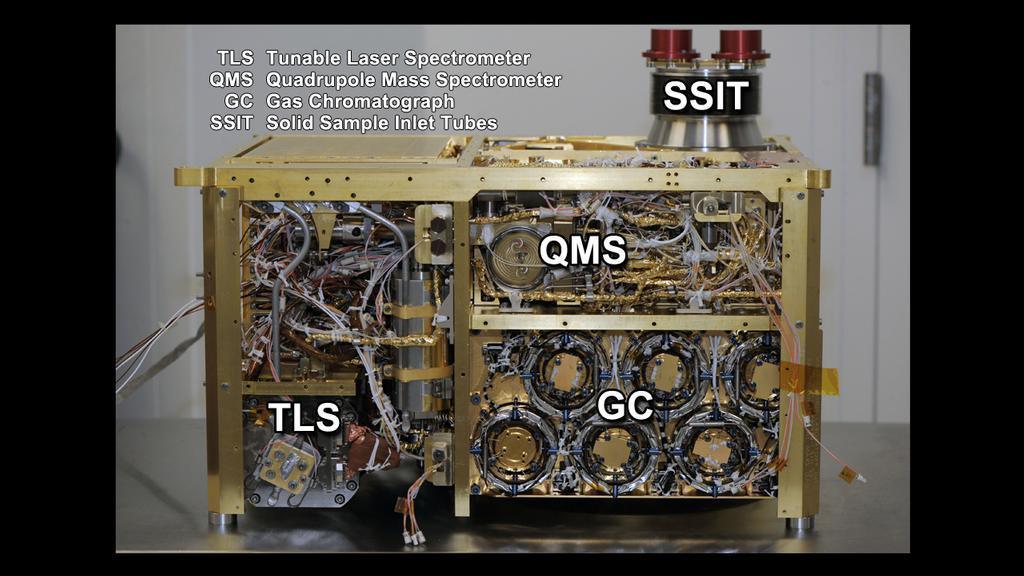


 Op
Op 








 Op
Op 


